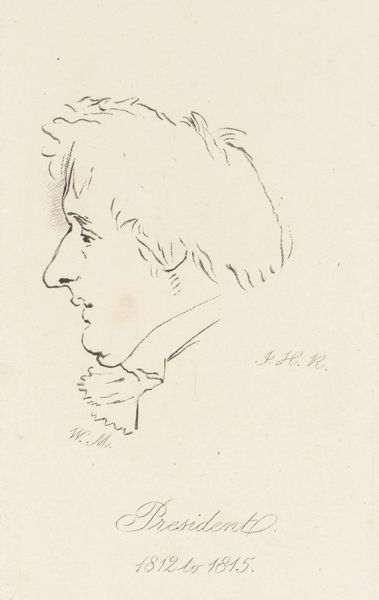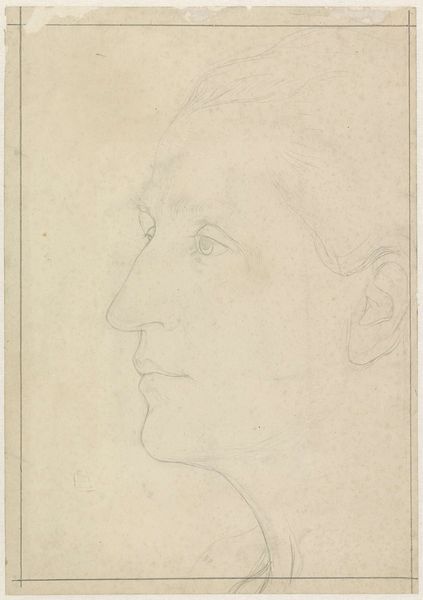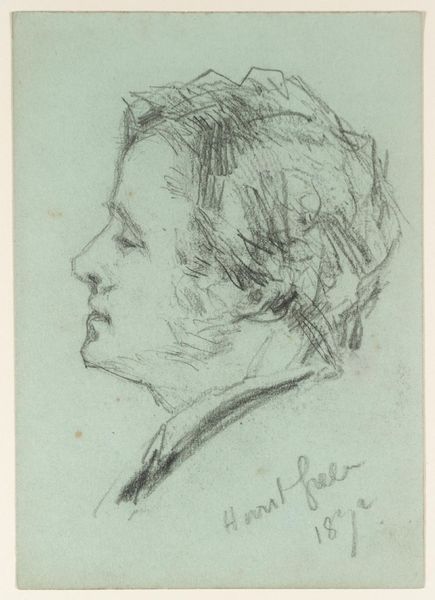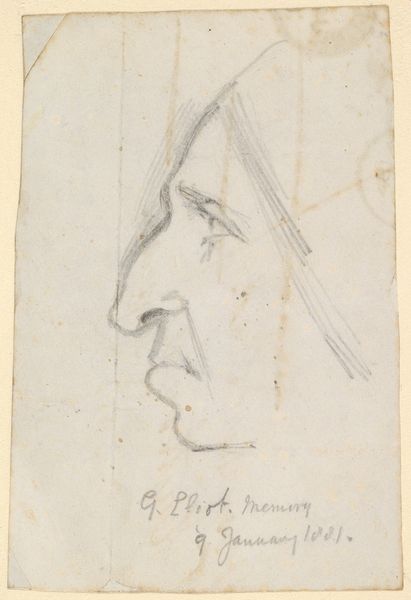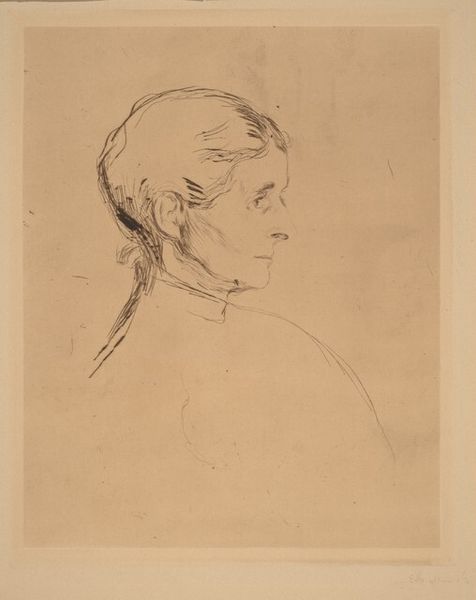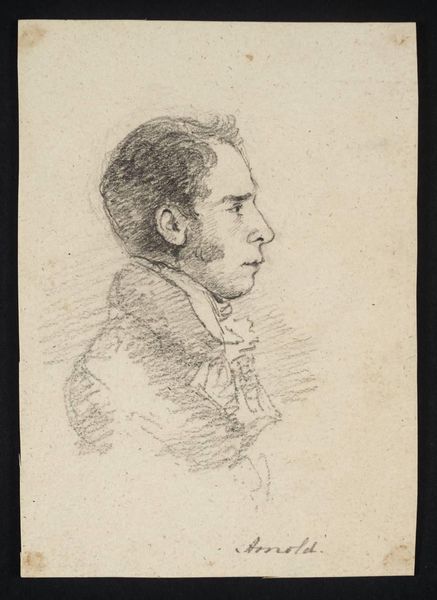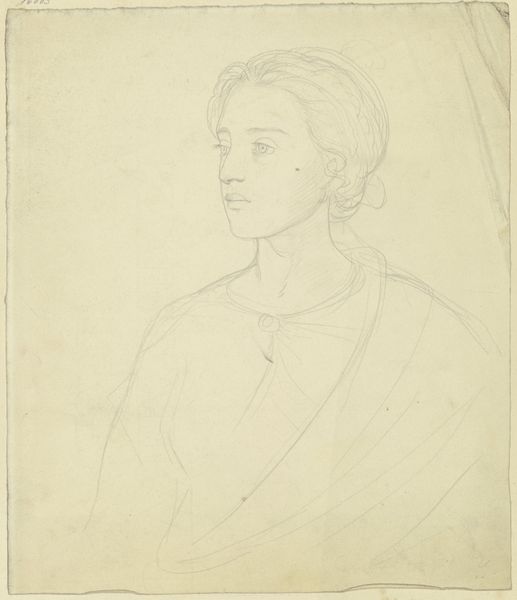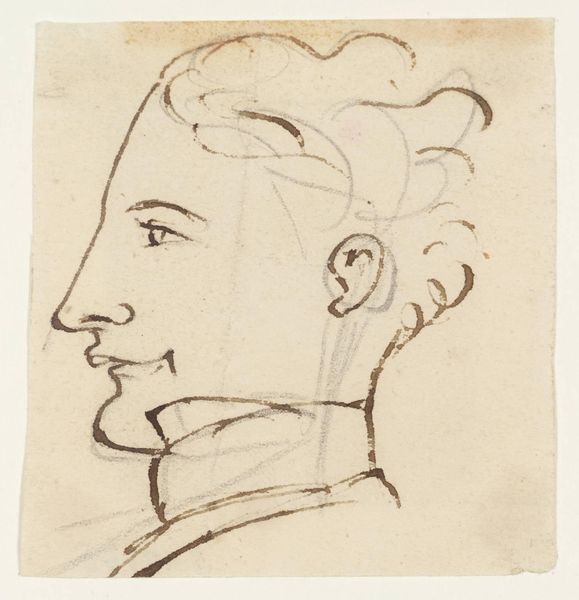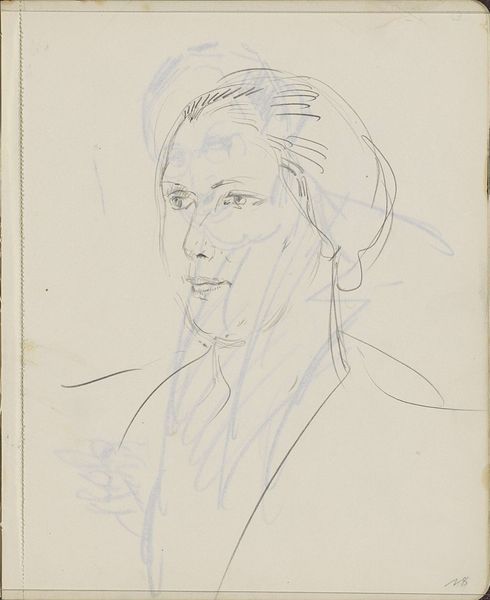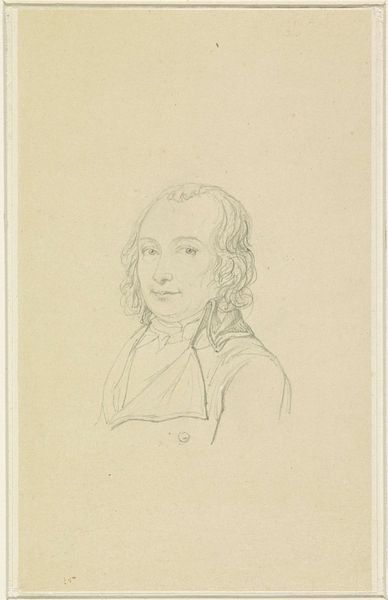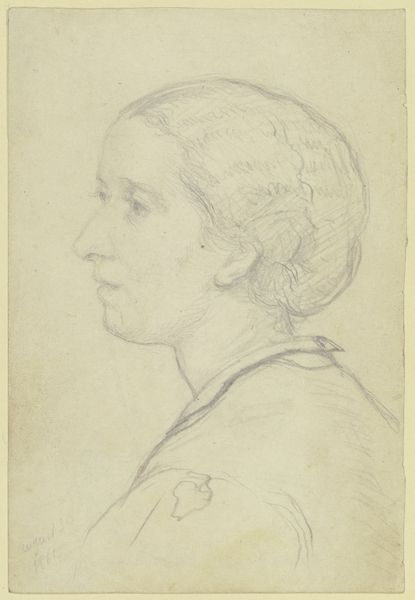
Schets van Henriëtte Roland Holst-van der Schalk, van opzij 1905
0:00
0:00
drawing, pencil
#
portrait
#
drawing
#
pencil sketch
#
figuration
#
pencil
#
ashcan-school
#
modernism
#
realism
Dimensions: height 152 mm, width 114 mm
Copyright: Rijks Museum: Open Domain
Editor: Here we have Richard Nicolaüs Roland Holst's 1905 pencil sketch, "Schets van Henriëtte Roland Holst-van der Schalk, van opzij," a portrait drawing housed in the Rijksmuseum. The ephemeral quality of the pencil on paper gives the work a certain lightness. What social or cultural contexts shaped its creation and reception? Curator: Well, considering Holst's affiliations and the time, it’s crucial to understand the political atmosphere. Holst was deeply involved in socialist circles. This sketch of his wife, Henriëtte, also a prominent socialist and writer, therefore becomes a political artifact. How does viewing it as such change your interpretation? Editor: That's fascinating. Knowing their political leanings makes me wonder if the sketch's simplicity is a deliberate choice, maybe even a reflection of their ideals of unpretentiousness and connection to the working class. It's almost like a casual glimpse into their lives. Curator: Precisely. And consider the role of portraiture in solidifying a public image. The Ashcan school aesthetic was also prevalent, influencing how everyday subjects were depicted, further embedding political discourse within art. Could the seeming 'ordinariness' be a deliberate statement against elitist art practices? Editor: So, it's less about formal portraiture and more about capturing the essence of a politically engaged individual, and, through her, perhaps a broader social movement. Curator: Exactly. And the Rijksmuseum displaying it today - that’s a powerful institutional endorsement of figures once considered radical. What does it say about how our societal values shift, or perhaps are co-opted, over time? Editor: It gives me a lot to consider in regard to context. Seeing the drawing within the framework of art and political history adds new dimensions to what initially seemed to be a simple sketch. Curator: Indeed. Recognizing that art doesn’t exist in a vacuum transforms our viewing experience and allows for critical engagement with history itself.
Comments
No comments
Be the first to comment and join the conversation on the ultimate creative platform.
